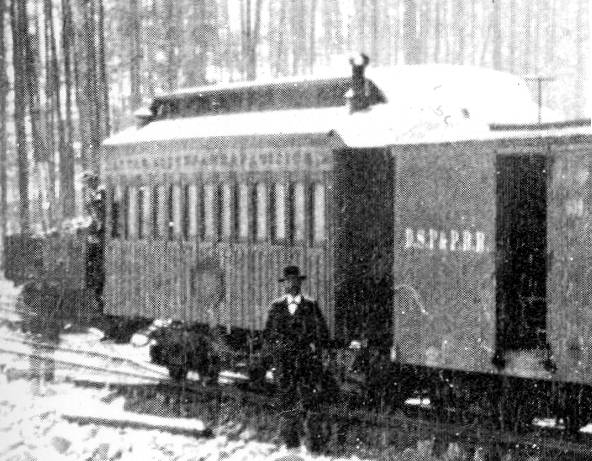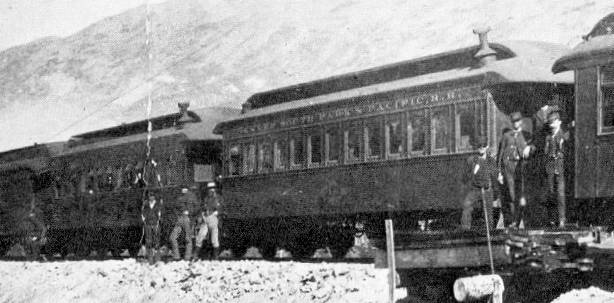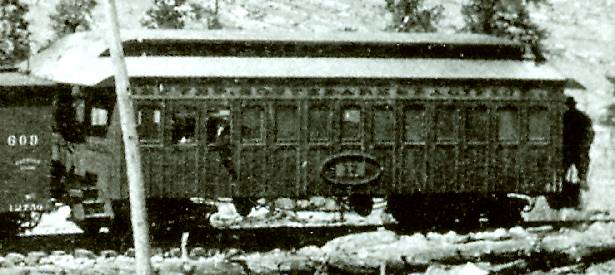Coaches #16, #17, #22 & #24
|
||||||||||||||||||||||||||||||||||||
 |
|
(2) Bowers-Dure coach (#24?) at St. Elmo, 1883. W.H. Jackson photo at Digerness2-295, Chappell-47(u), Ferrell/SoPk-77, Helmers-136(d), Poor-204, and online (Image WHJ-1293 or WHJ-1424 in the Denver Public Library's Western History Collection). (Can you see the ghost in this photo?) |
WHY did these cars have this unique look? See
The Bowers-Dure Cars page.
HISTORY
The Atchison, Topeka & Santa Fe had hopes of getting into the Colorado mountains ahead of the Denver & Rio Grande, and in February of 1878 sent crews into the mountains to stake their claim to the Raton Pass. In April of that year they tried to do the same with the Royal Gorge, but were beaten to the punch by the Rio Grande, setting off the well-known “war” over the Royal Gorge. But the Rio Grande had financial problems, and though he won the war for the Gorge, by October, General Palmer had no choice but to lease his road to the Atchison in order to prevent foreclosure. The Atchison then offered to finance the South Park’s line into Leadville, but was rebuffed. In August of 1879 the Rio Grande lease was nullified, and a receiver appointed.
The Atchison had purchased a large amount of narrow gauge equipment during the year, not all of which had reached Colorado. But it now had nothing to do with it. The South Park graciously helped out by leasing most, if not all, of it. Included in the deal were six first class passenger coaches just built for them by the obscure Delaware firm of Bowers, Dure & Co. (3) They had been delivered to the Atchison at Pueblo 2 August 1879. They would be delivered to the South Park in May 1880. It appears they were not all received at the same time, as they went on the South Park roster as #16, #17, and #21 - #25. Two of the last received—#23 and #25—were immediately converted to combination baggage-coach by the addition of a baggage door.
First-class coaches #16, #17, #22 and #24 were renumbered #59 - 62 by the Union Pacific in 1885, since they were all of the same type, by the same builder, and the same length. (All the factors that were considered important, apparently!) They had lost their fancy paneling and white letterboards by 1884. Here’s what they looked like by the mid-1880s:
 |
|
(3) Two Bowers-Dure coaches just outside the snowsheds at Atlantic, 1885. (The number on the nearer car appears to be “16.”) Joseph Collier photo at Digerness2-324(d), Ferrell/SoPk-90, Helmers-157(m), Kindig-311(d), and online (Image C-109 in the Denver Public Library's Western History Collection). |
Coach #62 (former #24) was dropped from the roster in 1887 without notation as
to reason. But the other three were there when the road was reorganized as the
Denver, Leadville & Gunnison in 1889. The photo on the next page shows DL&G coach #59 (former #16) with a nice
new paint job, lettering and striping.
